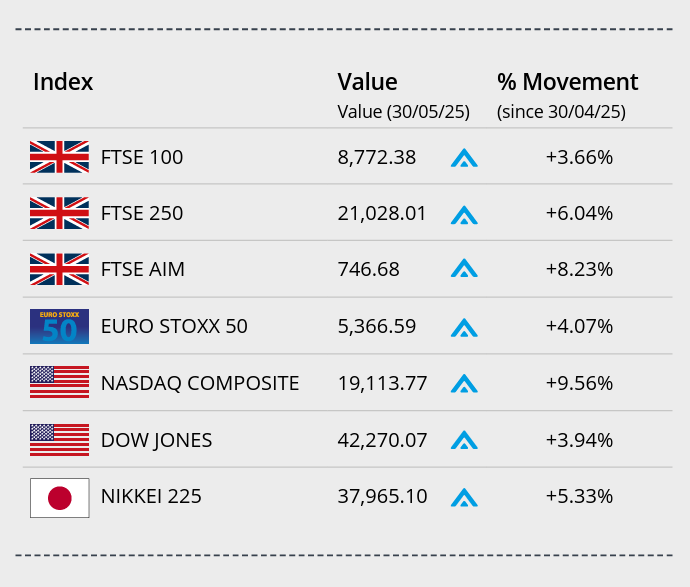| The Spending Review included: NHS to receive £29bn a year extra and £39bn over 10 years for social housing | GDP dropped by 0.3% in April, highlighting ongoing economic fragility and the biggest drop since October 2023 | President Trump signed an executive order to reduce tariffs on UK cars being shipped to the US |
“We are renewing Britain”
Last week, Rachel Reeves presented her Spending Review to set out day-to-day spending for the next three years and capital spending plans for the next four years. Stating her focus was on the nation’s health, security and economic growth, the Chancellor took to the dispatch box saying, “We are renewing Britain… but I know too many people in too many parts of our country are yet to feel it.”
One of the most anticipated announcements was on the National Health Service, which Reeves described as “our most treasured public service.” She confirmed that spending on the NHS will rise by 3% a year after inflation – “an extra £29bn per year for the day-to-day running of the health service.” Increasing the NHS technology budget by 50%, she pledged £10bn of investment to “bring our analogue health system into the digital age, including through the NHS app.”
On housing, Reeves allocated £39bn to fund social and affordable housing over the next ten years, saying this was “the biggest cash injection into social housing in 50 years.” The core schools’ budget was increased by £2bn in real terms over the Review period. For training and upskilling, £1.2bn will go towards supporting young people into apprenticeships and training schemes.
Funding of £7bn will be made available for 14,000 new prison places and there will be an increase in police spending averaging 2.3% each year. Border security funding is set to be increased, with up to £280m extra a year by the end of the Review period.
Some elements shared before the Review, included:
- An increase in defence spending – to 2.5% of GDP by 2027 (2.3% currently). A £5bn a year uptick
- An extension to free school meals for 500,000 more children (whose parents receive Universal Credit, irrespective of their income)
- A U-turn on Winter Fuel Payments – now to be paid to three quarters of pensioners in England and Wales in 2025
- An increase in science and technology spending – £86bn pledged by the end of the Parliament
- An extension to train, bus and tram investment – £15.6bn made available for improvements
- An investment in the Sizewell C nuclear power station – £14.2bn to construct this plus £2.5bn to build the UK’s first Small Modular Reactors.
Chief Executive of the Confederation of British Industry (CBI) Rain Newton-Smith said the Review, “Signals a downpayment on hardwiring the growth mission into government priorities. Against a challenging backdrop, the choice to prioritise investment in clean energy, R&D, as well as delivering a much-needed boost to housing, transport and infrastructure is the smart play that will raise the long-term ceiling of the economy.”
She continued, “The litmus test will be following through on delivery in partnership with industry at pace. That must be underpinned by a comprehensive strategy for driving investment in adult skills and addressing high energy costs, which were missing from today’s announcement.”
The Spending Review was set against the backdrop of employment data from the Office for National Statistics (ONS) showing a weakening labour market – available jobs fell by 63,000 between March and May 2025 and the unemployment rate ticked higher. There was a reduction in the number of payrolled employees in May, with early estimates indicating 30.2 million, a fall of 0.9% from May 2024.
April GDP takes a slide
ONS revealed on Thursday that monthly real gross domestic product (GDP) is estimated to have fallen by 0.3% in April 2025, marking the biggest monthly drop since October 2023 against a predicted 0.1% reduction. This follows growth of 0.2% recorded in March. Real GDP is estimated to have grown by 0.7% in the three months to April 2025, compared with the three months to January 2025. Commenting on the data, Keir Starmer said he was “not satisfied with growth” and that the downgraded forecast “just spurs them on.”
Parts of UK-US tariff deal confirmed
On Monday, President Trump signed an executive order to reduce tariffs on UK cars being shipped to the US, which will bring into force parts of a tariff deal agreed between the two countries last month. Speaking at the G7 summit in Canada, the Prime Minister called the move a “very important day” for both countries.
Here to help
Financial advice is key, so please do not hesitate to get in contact with any questions or concerns you may have.
The value of investments can go down as well as up and you may not get back the full amount you invested. The past is not a guide to future performance and past performance may not necessarily be repeated.
All details are correct at time of writing (18 June 2025)










